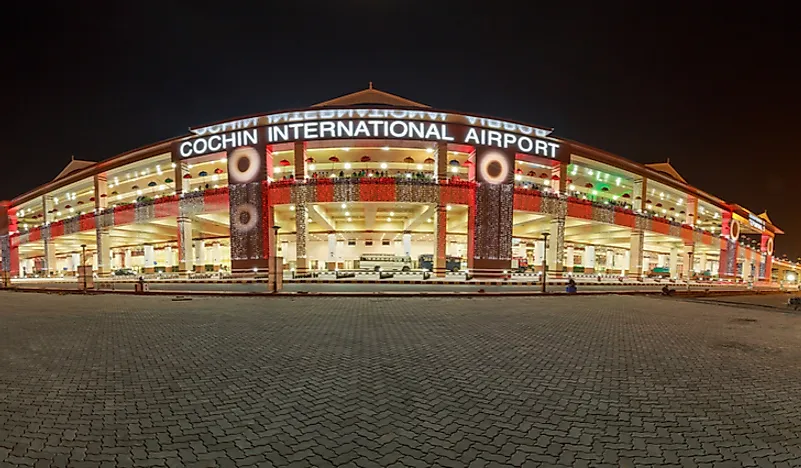Where Is The World's First Fully Solar-Powered Airport?

In 2015, Cochin International Airport became the world's first airport to operate completely on solar power. The airport is located in Kochi, within the Indian state of Kerala. The airport serves approximately 10 million passengers annually, with more than 1,000 flights departing each week. Additionally, nearly 30 airlines fly in and out of Cochin International Airport, and it ranks as India's fourth busiest airport in terms of international traffic. The airport also features several restaurants and shops, all of which run on solar energy.
History
The earliest air facilities in Kochi included an aerodrome and airstrip built in 1936 by the British Residency of the Kingdom of Kochi, which was intended to transport British officials who were building Cochin Port. During the Second World War, the Indian Navy converted the facility into a military airport. The site was chosen because of its strategic location, and became the headquarters of the Royal Navy in Southern India, serving as an air station and seaplane base. During the war, the airport housed naval fighter planes and was prepared to defend against potential attacks from Japan. When India attained independence from Britain in 1947, the country's navy operated the airport, although it could also be used by civilian aircraft. In the 1980s, the Gulf's economic boom created the need for an international airport in Kochi that could accommodate expatriates working in the Middle East.
Construction
After gaining approval in 1993, the construction of the airport had an estimated cost of $14 million and was expected to be operating by 1997. Funding for the project was intended to come from interest-free loans, particularly from non-resident Indians working abroad, as well as donations from other industrial undertakings, cooperative societies, exporters, and state government loans. In July 1993, the Cochin International Airport Society was created and registered to execute the project, and its chairman was the chief minister of Kerala. Approximately 872 families and 2,300 landowners were resettled to create room for the new airport, and a total of 1,213 acres of land had to be acquired. On May 25th, 1999 the airport was inaugurated by the President of India, and the first commercial service began operating on June 10th, 1999.
Modern Cochin International Airport
The use of solar power in Cochin International Airport began in 2013, initially as a test pilot that included the installation of 400 solar panels. Following the success of the test pilot, the airport dedicated 45 acres of land, which had been reserved for cargo handling, to the creation of a solar power plant, and installed a total of 46,000 solar panels. The airport generates 12 megawatts of power, which meets its own use of electricity needs, and any surplus is added to the state grid. The solar plant is anticipated to eliminate approximately 300,000 metric tons of carbon, which is equivalent to planting about 3 million trees.
Awards
In 2016, the Air Passenger Association of India selected Cochin International Airport as the best non-metro airport in the country. In 2018, the United Nations (UN) selected the airport as the recipient of the coveted Champions of the Earth award, which is the highest environmental honor given by the United Nations. Cochin International Airport is now helping other airports and organizations embrace solar power, and has signed agreements to offer technical assistance to three airports in Ghana.











